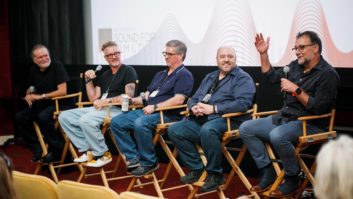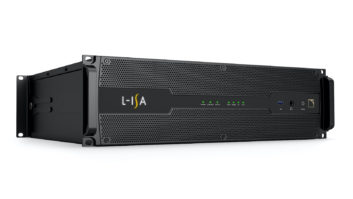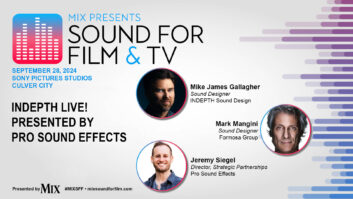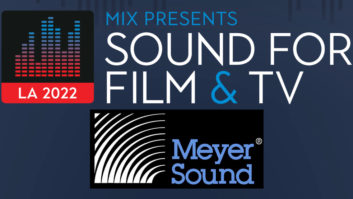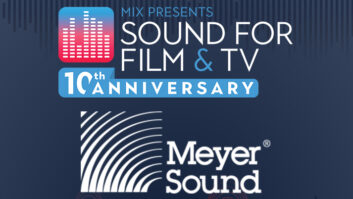Standing at the corner of 57th Street and Broadway, Carnegie Hall’s striking Italian Renaissance-style facade of terra-cotta and iron-spotted brick is familiar to New Yorkers and music-lovers worldwide. Built in 1891, Carnegie Hall has long been considered a litmus test of musical greatness, and the list of famous musicians who have graced the stage makes up a Who’s Who of the past century. But Carnegie Hall is not limited to classical music performances only, and many of the world’s leading amplified jazz and rock acts have appeared there. The Beatles made their New York debut at Carnegie Hall in 1964, followed by the Rolling Stones that same year, and The Doors, Bob Dylan, Pink Floyd, Elton John, David Bowie and Stevie Wonder have all appeared on its stage. George Wein’s internationally famous jazz festivals have been an annual fixture, artists as diverse as Judy Garland and Chicago have recorded live albums there, and for the past ten years, Carnegie Hall has hosted Sting’s annual rain-forest benefit.
However, though the hall’s celebrated acoustics have been frequently analyzed as a basis for reverb algorithm design, those same acoustics have proven a nagging problem for sound-reinforcement system designers and installers. Seating 2,800, Carnegie Hall features two horseshoe-shaped levels of box seats that wrap around the hall over the orchestra level. Above that is the seven-row dress circle, and above that is the 15-row balcony, an area that has long been the focus of problems for reinforced events.
“My employers, the people who run Carnegie Hall, demand nothing but the best,” comments John Cardinale, Carnegie’s stage electrician and system engineer, who has been with the hall since 1982. “There was a period where we had about 600 letters complaining about the sound. These were all [complaints about shows staged by] outside promoters, with nine different sound companies and 11 different engineers mixing.” Of course, audiences in a world-class concert hall will rarely make the distinction between the acoustics of the venue itself and the performance of a sound system in that room, so the problem of reducing audience complaints landed in Cardinale’s lap.
The immediate solution resulted from a successful short-term rental. In 1989, New York rental house Andrews Audio supplied a sound system for an event to celebrate Irving Berlin’s 100th birthday and, pleased with the results, Carnegie Hall purchased a similar system. The original system included a central cluster made up of three rows of Meyer Sound UPA-1Cs and was built into a frame so that the sound system could be easily removed for non-reinforced concerts. It weighed close to 1,000 pounds and only just fit through a 7-foot door frame for storage. “You couldn’t fit a dollar bill between the top of the frame and the door,” says Cardinale.
As Cardinale admits, the cluster design was a compromise. “We were leaning on Meyer’s SIM technology to make it work,” he recalls. “We wanted an audio system that reflected our taste in unamplified sound, and the Meyer system met that requirement better than anyone else.” In later years, the original cluster design was upgraded with UPA-2 speakers, which feature conical horns and provided greater directionality at high frequencies. Because the hall is long and narrow with the ceiling quite close to the balcony, the wider coverage of the UPA-1s had tended to aggravate the effects of early reflections from those surfaces.
However, as Cardinale explains, “The throw from the cluster to the balcony is about 125 feet, and UPAs aren’t really made to project sound that far.” Cardinale had seen (and heard) the results of designer Roger Gans’ work with Meyer Sound principal John Meyer on the San Francisco Opera House renovation (see “Wired for Sound” in Mix, October 1997) and asked Meyer to help Carnegie step up to the newer technology.
ACOUSTIC MODELING
First, ARTEC Consultants (New York) was contracted to measure Carnegie’s impulse response, which is normally taken by popping a balloon or shooting a starting pistol. In this case, ARTEC erected scaffolding in the hall and took measurements not from the stage but from the actual speaker cluster position. The resulting echograms offered a detailed map of the hall’s echo structure, allowing for accurate modeling of the hall’s response in a specialized computer program.
Meyer’s in-house engineering department uses the Multipurpose Acoustical Prediction Program (MAPP), an AutoCAD plug-in, to aid in the design of permanent installations. MAPP uses 3-D architectural CAD files and high-resolution speaker data to predict coverage and interaction, allowing a speaker design to be evaluated before installation, and MAPP’s high resolution overcomes some of the limitations of previous prediction methods. But, while newer venues typically have CAD drawings and other electronic plans on hand, Carnegie Hall had to be painstakingly modeled from blueprints by Todd Meier and Gladys Leung at Meyer Sound.
Using the model in MAPP, Meyer’s engineering department was able to compare the effectiveness of several different designs and eventually chose an arrangement of three MSL-4 speakers for the cluster covering the problematic balcony row. Subsequent tests confirmed the usefulness of the MAPP prediction method: RASTI measurements made using a B&K machine indicated a 6dB improvement in signal-to-noise and a full point improvement in STI after the installation.
“We had speaker alignment guru Bob McCarthy come in and do the final SIM,” says Cardinale. “I feel comfortable running SIM myself, but Bob is a real Jedi Master.” McCarthy has now been called on to perform SIM analysis and correction at Carnegie Hall on four separate occasions and used the hall’s own SIM System II, which had been purchased for a previous installation. “Carnegie Hall’s balcony represents the toughest data I’ve ever faced in 15 years of SIM work,” McCarthy comments.
In fact, although Carnegie Hall management was very happy about the improvements resulting from the first Meyer Sound installation in 1989, McCarthy admits he was disappointed with the sound in the balcony. “We tapered the array level-wise and delay-wise, but we couldn’t do any more with the restrictions imposed by the design criteria,” he explains. “When the UPA-2 came along, it gave us more direct-to-reverberant sound, but still I wasn’t happy.”
“The new system is based around the MSL-4, which really gets the sound into the balcony,” says Cardinale. Again designed in three rows, the new cluster contains three MSL-4 speakers to cover the balcony and two pairs of the 90-dispersion CQ-1 beneath. An additional cluster on each side of the stage at the orchestra level consists of two MSL-4s with a PSW-2 subwoofer. Four UPM-1P powered frontfill speakers cover the first few rows. “The speakers on the stage are aligned to a fictitious source onstage, as are the frontfills,” McCarthy says.
FAST P.A. SETUP AND STRIKE
To meet the requirement that the speakers be struck for non-reinforced events, the new, larger center cluster breaks into two sections on the ground. “The top section is just the MSL-4s, and the bottom is the CQ-1s,” says Cardinale. “We land them on platform trucks, and they roll away.” When setting up, the MSL-4 section is hung directly from the batten for the previous UPA cluster and the CQ-1 section hangs just below on a sub-bar, itself hung from diagonal steel cables. With the hall’s motorized winch sets, the P.A. can be up and running in 40 minutes.
As is usual with a center cluster, the top row is not delayed. “The middle row synchronizes to the down-lobe from the top row, and the bottom row aligns with the down lobe from the middle row,” McCarthy explains. Six Meyer CP-10 parametric EQs are used to equalize the system’s 12 zones, 11 of which are delayed via three Audio Technical Labs ADU-2D signal delays. (Audio Technical Labs is Meyer’s Japanese distributor; its products are not currently marketed in North America.) Zone signals are distributed by a Meyer LD-1A line driver.
Four USW-1 dual-15 subwoofer cabinets from the previous installation are available for supplementary low-end response when required for pop and rock shows, but a little low end goes a long way in the hall. Also from the earlier Meyer installation are 14 Crown-powered UPM-1 delay speakers. Two pairs of UPMs are mounted above the balcony on a ceiling beam, a half-dozen are used beneath the balcony for the dress circle, and two more pairs fill in the first and second box seat tier’s hard-to-hit seats at the sides.
Other inventory includes a Ramsa 840 monitor console and a half-dozen Crown-powered Meyer UM-1C floor monitors. Front-of-house equipment includes a 24-channel Ramsa C900 LCR console and an effects rack with five dbx 903 compressors and four 904 gates, a Yamaha SPX900 and a Lexicon PCM70. The microphone selection includes an assortment of standard models from AKG, Audio-Technica, Shure, Sennheiser and Neumann.
KISS
Cardinale’s advice for visiting engineers is to “keep it simple, stupid.” He reports that the hall is very live in the midrange with an RT-60 of 1.8 seconds around 1 and 2 kHz. The most successful pop shows either use minimal monitoring or in-ear monitors. “The stage is designed to reflect and transmit sound,” Cardinale points out. “The sound coming off the stage is often not coherent with the P.A. and acts as what SIM folks call contamination.”
Cardinale recommends Plexiglas screens around the drummer, but adds that some are resistant. “It’s also in the touch of the musician,” he continues. “We’ve had guys who you could hear all over the room without a mic, and yet it doesn’t mask everything else. Others just can’t hold themselves back, and there’s no way words can be intelligible over it. It’s much easier if a band can get a good blend between themselves acoustically before the P.A. is turned on.”
Events requiring sound reinforcement are a growing portion of the calendar for today’s concert halls, whether handled in-house or by an outside vendor, and last season’s pop shows at Carnegie Hall ranged from Tony Bennett to Jefferson Starship. “The system is very linear from low levels on up,” says Cardinale. “Even with Starship, the speakers could handle the levels without distorting, and it’s the distortion that annoys patrons. If it’s clean and clear, louder levels are more tolerable.”
Although concert halls generally would rather not be in the sound-reinforcement business, management must cater to patrons’ increasing expectations of quality sound at reinforced events. In the case of Carnegie Hall, management decided that a quality sound system-matched precisely to the unique acoustic characteristics of the hall-offers benefits unachievable with even the best rental system.



